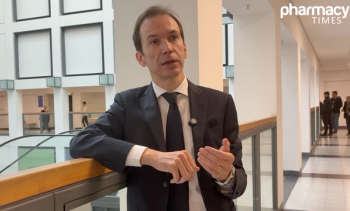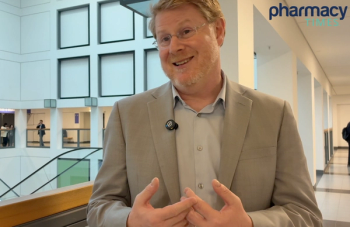
Xeljanz: Juggling a Delicate Risk-Benefit Ratio
Pfizer's Xeljanz (tofacitinib) is the first Janus kinase inhibitor approved for rheumatoid arthritis and the first oral biologic within the RA class. Dina Rufo of GlobalData discusses the factors that will affect uptake of the drug.
Pfizer's Xeljanz (tofacitinib) is the first Janus kinase inhibitor approved for rheumatoid arthritis and the first oral biologic within the RA class. Dina Rufo of GlobalData discusses the factors that will affect uptake of the drug.
The FDA approved Xeljanz (tofacitinib) to treat adults with moderately to severely active rheumatoid arthritis (RA) who have had an inadequate response to methotrexate 15 days ahead of its scheduled approval date.
Xeljanz is the first oral biologic option within the RA class, the first Janus kinase inhibitor approved for RA, and the first new disease-modifying antirheumatic drug (DMARD) for RA approved in more than 10 years. Other biologic therapies used to treat RA (all of which are injectables or infusibles) include Amgen’s Enbrel (etanercept), Johnson & Johnson’s Simponi (golimumab) and Remicade (infliximab), UCB S.A.’s Cimzia (certolizumab pegol), Roche’s Actemra/RoActemra (tocilizumab) and Rituxan/MabThera (rituximab), and BMS’ Orencia (abatacept).
Because it is an immunosuppressive agent, the FDA noted that Xeljanz is associated with “an increased risk of serious infections, including opportunistic infections (infections that occur primarily when the immune system is suppressed), tuberculosis, cancers and lymphoma.” The drug has a boxed warning regarding these safety risks, and will be packaged with a medication guide per its Risk Evaluation and Mitigation Strategy. Also, according to The Pink Sheet, Xeljanz carries the extra “burden” of laboratory monitoring. Unlike many of the products already on the market to treat RA, it is recommended that patients taking Xeljanz undergo tests every 3 months for changes in lymphocyte, neutrophil, and hemoglobin levels and every 4 to 8 weeks for changes in lipid levels.
Xeljanz will cost $2055 for a 30-day supply, which is approximately 20% less than Abbott’s Humira (adalimumab), the current biologic leader for the treatment of RA. “Pricing the new oral therapies less than the current subcutaneous and infusion therapies are in part due to lower manufacturing cost and an attempt for swift uptake,” noted Dina Rufo, MS, therapy area analyst in immunology at GlobalData.
Despite being priced slightly below its competitors, Rufo predicts the drug will have slow uptake as a result of its safety profile. She also noted that physicians may be hesitant to prescribe a therapy so new. In contrast, she added that patient requests for the drug may be high, as its administration does not involve needles.
In a
Payers interested in lowering costs may be more accepting of the drug, on the other hand. According to Express Scripts’ 2011 Drug Trend Report, inflammatory conditions make up to 23.7% of the total specialty spend. Although it remains to be seen, it is possible that the lower cost of Xeljanz may spur some health plans to add it to their list of preferred products, and this could increase the sales of the drug.
This potential increase in sales could be short-lived, however. “GlobalData expects Xeljanz to have a short lead in the oral RA therapies market until 2014 when Rigel Pharmaceuticals/AstraZeneca’s spleen kinase (SYK) inhibitor, fostamatinib, enters the market,”said Rufo. “Other oral RA pipeline therapies include AB Science’s masitinib and Eli Lilly/Incyte’s baricitinib, which will both enter the market after fostamatinib and face a highly competitive field.”
Newsletter
Stay informed on drug updates, treatment guidelines, and pharmacy practice trends—subscribe to Pharmacy Times for weekly clinical insights.























































































































































































































